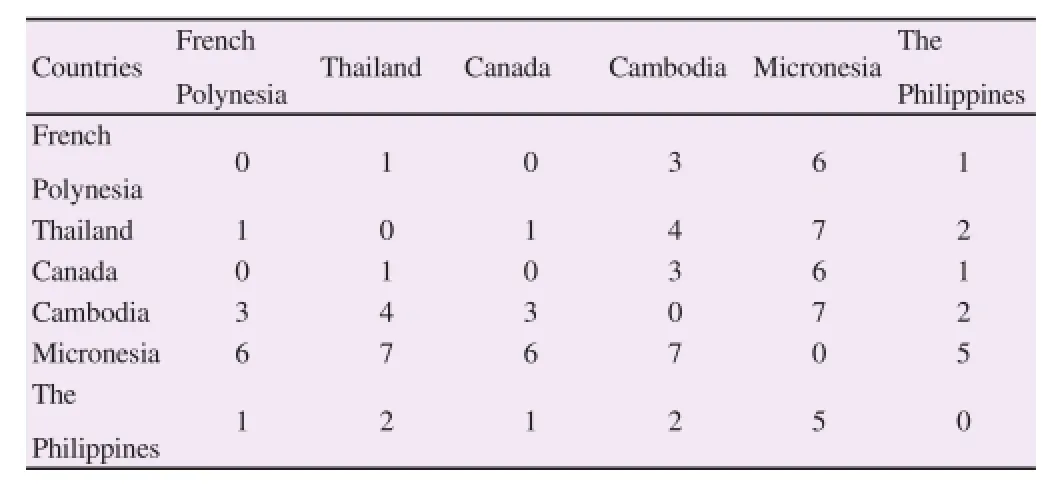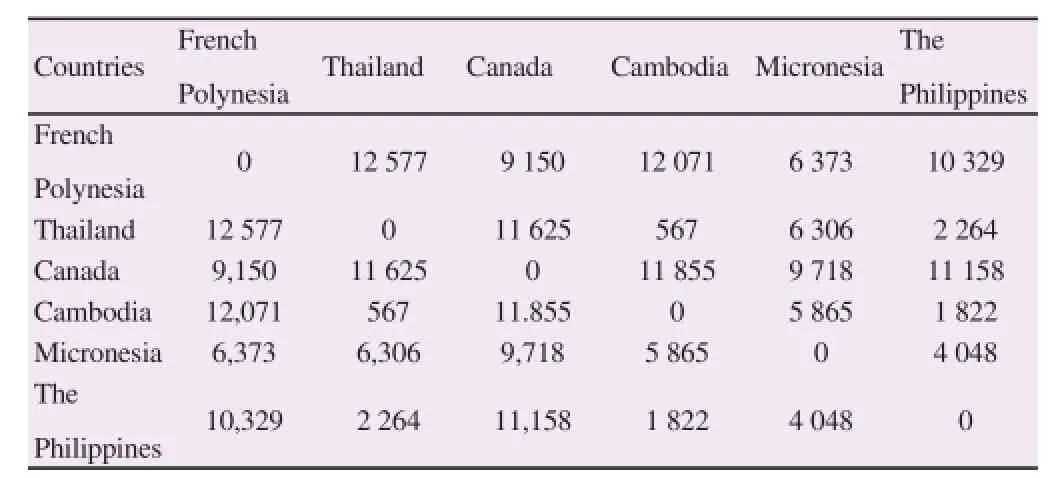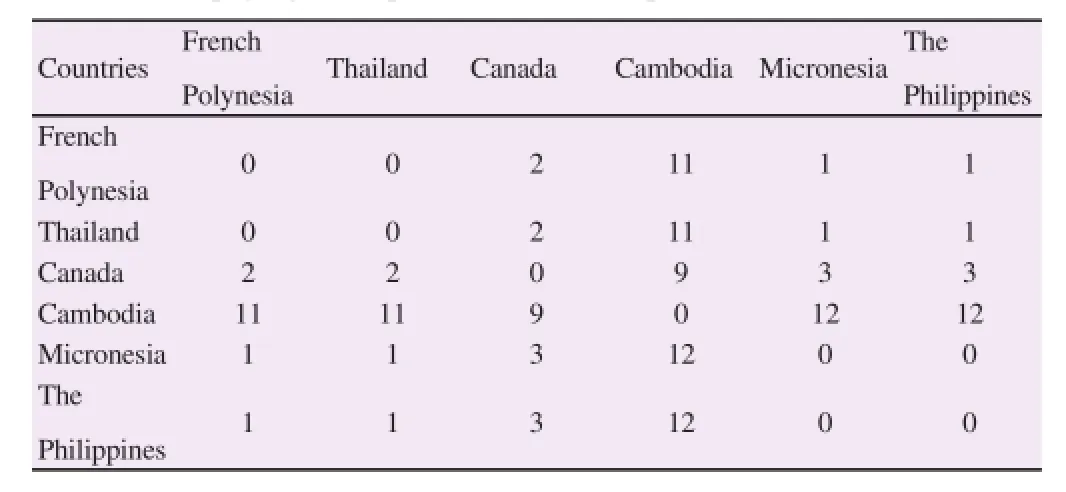ZIka virus infection in Asia: reappraisal on phylogenetic data of Asian lineage
Somsri Wiwanitkit, Viroj Wiwanitkit
1Wiwanitkit House, Bangkhae, Bangkok Thailand2Visiting professor, Hainan Medical University, China; visiting professor, University of Nis, Serbia; adjunct professor, Joseph Ayobabalola University,Nigeria; Honorary professor, Dr DY Patil Medical University, India
ZIka virus infection in Asia: reappraisal on phylogenetic data of Asian lineage
Somsri Wiwanitkit1*, Viroj Wiwanitkit2
1Wiwanitkit House, Bangkhae, Bangkok Thailand
2Visiting professor, Hainan Medical University, China; visiting professor, University of Nis, Serbia; adjunct professor, Joseph Ayobabalola University,Nigeria; Honorary professor, Dr DY Patil Medical University, India
ARTICLE INFO ABSTRACT
Article history:
in revised form 16 March 2016
Accepted 15 April 2016
Available online 20 June 2016
Zika
Virus
Asia
Phylogenetic
Zika virus infection becomes the important global problem in the present day. The worldwide distribution of the infection can be seen. The genetic epidemiology study shows that the infection has subgroups of outbreaks. The Asian lineage is an interesting group that can be seen in a wide area. In this short article, the authors reappraises on the phylogenetic data of Asian lineage. The study on period, distance and phylogenetic parameter differences among isolated from several countries in the Asia lineage group is done. Based on the present study, the time and place dimnensional analysis can show that the disease distribution should be mainly induced by the international traveling.
Dear Editor,
Zika virus is the new focused virus in tropical medicine. The Zika virus infection can result in acute hemorrhagic febrile illness and the infection can also result in birth defect [1- 2]. The disease has been known for several decades but the big outbreaks have just been noted for a few years and the infection becomes the present global problem. There are many ongoing researches on this new infection. An interesting aspect is on the genetic epidemiology of this disease [3]. Success in isolation of virus could be seen in several recent outbreaks and the genetic contents analyses of the isolates were also done. “Passage history of the virus” can be seen from analysis of such data [4]. The genetic epidemiology study shows that the infection has subgroups of outbreaks. The Asian lineage is an interesting group that can be seen in a wide area [4]. In this short article, the authors reappraises on the phylogenetic data of Asian lineage. The study on period, distance and phylogenetic parameter differences among isolated from several countries in the Asia lineage group is done.
The data on the phylogenetic patterns on Asian lineage of Zika virus infection appeared in the previous referencing report [5] is used for further analysis in this study. The data were from 6 countries in Asia Pacific Region including French Polynesia, Thailand, Canada,Cambodia, Micronesia and the Philippines. The differences among the studied member of the lineage are assessed. The parameters to be studied include (1) Difference in year of merging of disease,(2) Difference in distance (km) and (3) Difference in phylogenetic parameter (Bootstrap unit). Cross tabulation analysis is used for showing the interrelationship among countries in the lineage.
According to this study, difference in year of merging of disease,difference in distance (km) and difference in phylogenetic parameter(Bootstrap unit) are shown in Table 1, 2 and 3, respectively.

Table 1Difference in year of merging of disease (year).

Table 2Difference in distance (km).

Table 3Difference in phylogenetic parameter (Bootstrap unit).
The present study can successfully shows the interrelationship among countries in the Asian lineage. Focusing on time, it can be seen that some countries have the problem of emerging of disease in the same period. However, when both time and distance paired parameters are focused, it cannot show any trend that the nearby countries will have an increased chance to get earlier problem. Also, when distance and phylogenetic parameter paired parameters are focused, it cannot show that the nearby countries will have a genetic closer viral sequence. It means that the infection spread independently to time and place background. Based on the present study, the time and place dimnensional analysis can show that the disease distribution should be mainly induced by the international traveling. The disease might be rapidly carried from one to the other setting without expectation and the international traveler from the third party countries might be the connecting jigsaw for the disease transmission. As noted by Imperato [6], “the globalization of the Zika virus was made possible by the widespread presence in various parts of the world of Aedes vectors and increased human travel that facilitated geographic spread.”
Conflict of interest statement
We declare that we have no conflict of interest.
References
[1] Joob B, Wiwanitkit V. Zika virus infection and dengue: A new problem in diagnosis in a dengue-endemic area. Ann Trop Med Public Health 2015;8:145-146.
[2] Cabrera-Gaytán DA, Galván-Hernández SA. Clinical features of Zika virus. Rev Med Inst Mex Seguro Soc 2016;54(2):225-229.
[3] Chan JF, Choi GK, Yip CC, Cheng VC, Yuen KY. Zika fever and congenital Zika syndrome: An unexpected emerging arboviral disease? J Infect 2016 Mar 3. pii: S0163-4453(16)00061-X. doi: 10.1016/j.jinf.2016.02.011. [Epub ahead of print]
[4] Haddow AD, Schuh AJ, Yasuda CY, Kasper MR, Heang V,Huy R, et al. Genetic characterization of Zika virus strains: geographic expansion of the Asian lineage. PLoS Negl Trop Dis 2012;6(2):e1477.
[5] Buathong R, Hermann L, Thaisomboonsuk B, Rutvisuttinunt W, Klungthong C, Chinnawirotpisan P, et al. Detection of Zika Virus Infection in Thailand, 2012-2014. Am J Trop Med Hyg 2015;93(2):380-383.
[6] Imperato PJ. The convergence of a virus, mosquitoes, and human travel in globalizing the Zika epidemic. J Community Health 2016 Mar 11. [Epub ahead of print]
Document heading 10.1016/j.apjtm.2016.04.017
15 February 2016
*Corresponding author: Somsri Wiwanitkit, Wiwanitkit House, Bangkhae, Bangkok Thailand.
E-mail: somsriwiwan@hotmail.com
 Asian Pacific Journal of Tropical Medicine2016年6期
Asian Pacific Journal of Tropical Medicine2016年6期
- Asian Pacific Journal of Tropical Medicine的其它文章
- Comparative study of the chitooligosaccharides effect on the proliferation inhibition and radiosensitization of three types of human gastric cancer cell line
- Study on prevention effect of Zishen Yutai pill combined with progesterone for threatened abortion in rats
- Correlation study of biological characteristics of non-small cell lung cancer A549 cells after transfecting plasmid by microbubble ultrasound contrast agent
- Expression and significance of angiostatin, vascular endothelial growth factor and matrix metalloproteinase-9 in brain tissue of diabetic rats with ischemia reperfusion
- Change of the peripheral blood immune pattern and its correlation with prognosis in patients with liver cancer treated by sorafenib
- Are efforts up to the mark? A cirrhotic state and knowledge about HCV prevalence in general population of Pakistan
